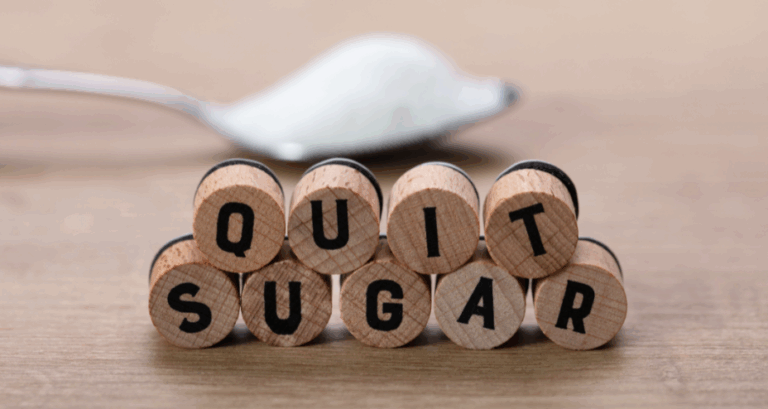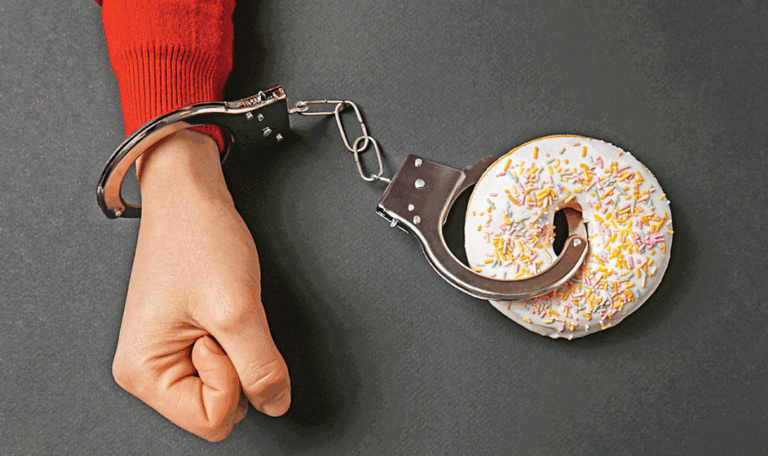The Complete Guide to Breaking Free from Sugar Addiction and Emotional Eating
By Mike Collins, The Sugar-Free Man
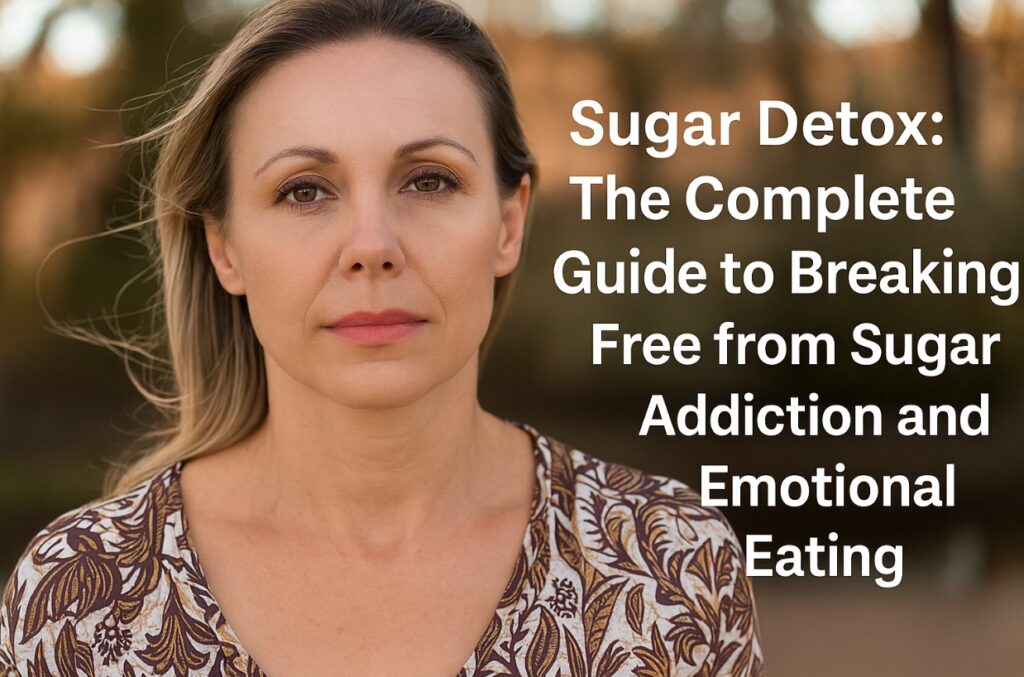
If you’ve ever started a sugar detox, only to end up elbow-deep in a bag of cookies two weeks later, you’re not alone. Most detoxes fail because they only target half the problem – the physical side.
But here’s the truth: sugar detox is just the first step. If you don’t also deal with the emotional reasons you reach for sugar, your cravings will come back stronger than ever.
This guide will walk you through both parts of a real sugar detox:
- The physical process of resetting your body
- The emotional work that rewires your habits for good
What Is Sugar Detox (and Why Most People Get It Wrong)
A sugar detox means removing added sugars from your diet. When you do this, you reset your taste buds, stabilize blood sugar levels, and start breaking your body’s physical dependency on sugar.
But let’s be clear:
The headaches, fatigue, and cravings you feel in the first week? That’s the easy part.
What really trips people up are the emotional triggers that sneak in after the detox ends.
Why Sugar Addiction Isn’t About Willpower
You’re not weak. You’re not broken. You’re addicted to a legal, normalized drug – sugar.
Every time you eat sugar, your brain releases dopamine – the same feel-good chemical triggered by alcohol, cigarettes, or even cocaine. That’s why willpower alone doesn’t cut it.
For many people, sugar becomes an emotional crutch. Think about it:
- Stress? Grab a donut.
- Bored? Open the pantry.
- Feeling low? Chocolate fixes everything, right?
These patterns run deep. You don’t need more discipline. You need a better strategy.
The Two-Phase Sugar Detox Plan That Actually Works
Real freedom from sugar requires two phases:
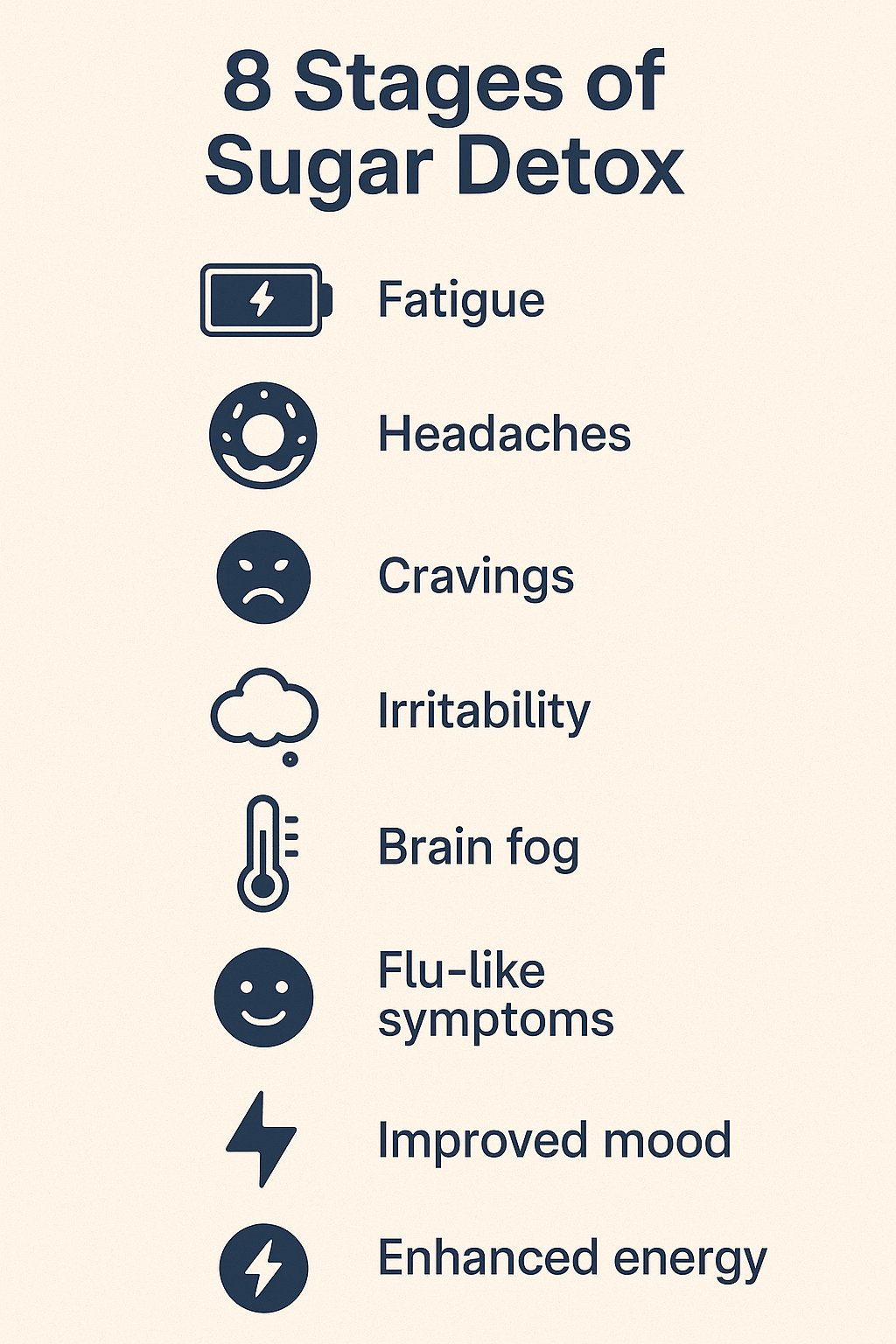
Phase 1: Physical Sugar Detox (Days 1–14)
Week 1: Elimination
- Cut all added sugars and hidden sugars in processed foods
- Eat real food: vegetables, protein, healthy fats, complex carbs
- Drink more water, sleep more, and expect withdrawal symptoms like headaches, mood swings, and cravings
Week 2: Stabilization
- Cravings should start fading
- Your energy improves, and sleep gets better
- Taste buds reset, and natural foods start tasting sweet again
Phase 2: Emotional Detox (Ongoing)
This is the part no one talks about.
If you don’t deal with emotional eating, you’ll just swap sugar for something else (scrolling, shopping, drinking, etc.). Emotional detox is about retraining your brain to deal with feelings; without using sugar as a drug.
The PAUSE Method: Your Go-To Sugar Craving Breaker
Here’s what to do when a craving hits:
Pause – Stop and take 3 deep breaths
Assess – Ask: What am I really feeling right now?
Understand – Figure out what you truly need (rest, comfort, connection)
Substitute – Pick a healthy response to meet that need
Evaluate – After trying it, notice how you feel
Emotional Eating Triggers and What to Do Instead
| Trigger | Instead of Sugar | Long-Term Fix |
|---|---|---|
| Stress | Take a walk, deep breathing | Daily movement, stress management habits |
| Boredom | Call a friend, do a hobby | Add fun, creative tasks to your week |
| Loneliness | Text someone, go to a café | Invest in relationships or join a community |
| Fatigue | Nap, sunshine, protein snack | Fix sleep schedule, check for burnout |
| Celebration | Massage, small gift, fun event | Create a list of non-food rewards |
How to Build a Sugar Detox Plan That Fits Your Life
Step 1: Identify Your Sugar Patterns
Track your food and mood for one week before starting. Notice:
- What you eat
- What you feel before/after eating sugar
- What situations trigger cravings
Step 2: Prep Your Environment
- Remove sugary foods from your house, car, and desk
- Stock healthy snacks (nuts, hard-boiled eggs, herbal teas)
- Plan your meals
- Pick a support person or group
Step 3: Set Realistic Expectations
- You’ll feel physical symptoms for 5–10 days
- Emotional challenges will show up after that
- Progress over perfection. Set achievable goals.
Step 4: Build Your Emotional Toolkit
Make a list of go-to actions for different emotions:
- 5 things for when you’re stressed
- 5 for when you’re sad
- 5 for when you’re bored
- 5 ways to celebrate without food
What the Research Says About Sugar Detox Success
Science backs this up:
- Physical sugar cravings fade in 10–14 days
- Emotional patterns take 6–12 weeks to change
- People who address emotional triggers are 3x more likely to stay off sugar
- Detox alone fails without emotional rewiring
Mistakes to Avoid During a Sugar Detox
- Going cold turkey too fast – Gradual reduction over a few days reduces shock
- Ignoring emotional triggers – This is where most relapses happen
- Trying to do it alone – Support makes success far more likely
- Perfectionism – One cookie doesn’t mean you failed
- Not planning for maintenance – Have a plan for weeks 3–12
When Sugar Detox Becomes a Lifestyle
This isn’t about perfection. It’s about gaining control over your choices again.
A sustainable sugar-free lifestyle looks like:
- Catching emotional cravings before they spiral
- Managing stress and boredom without food
- Making consistent choices that support your energy and health
- Feeling confident that sugar doesn’t own you anymore
Are YOU ready to break free from sugar FOR GOOD?
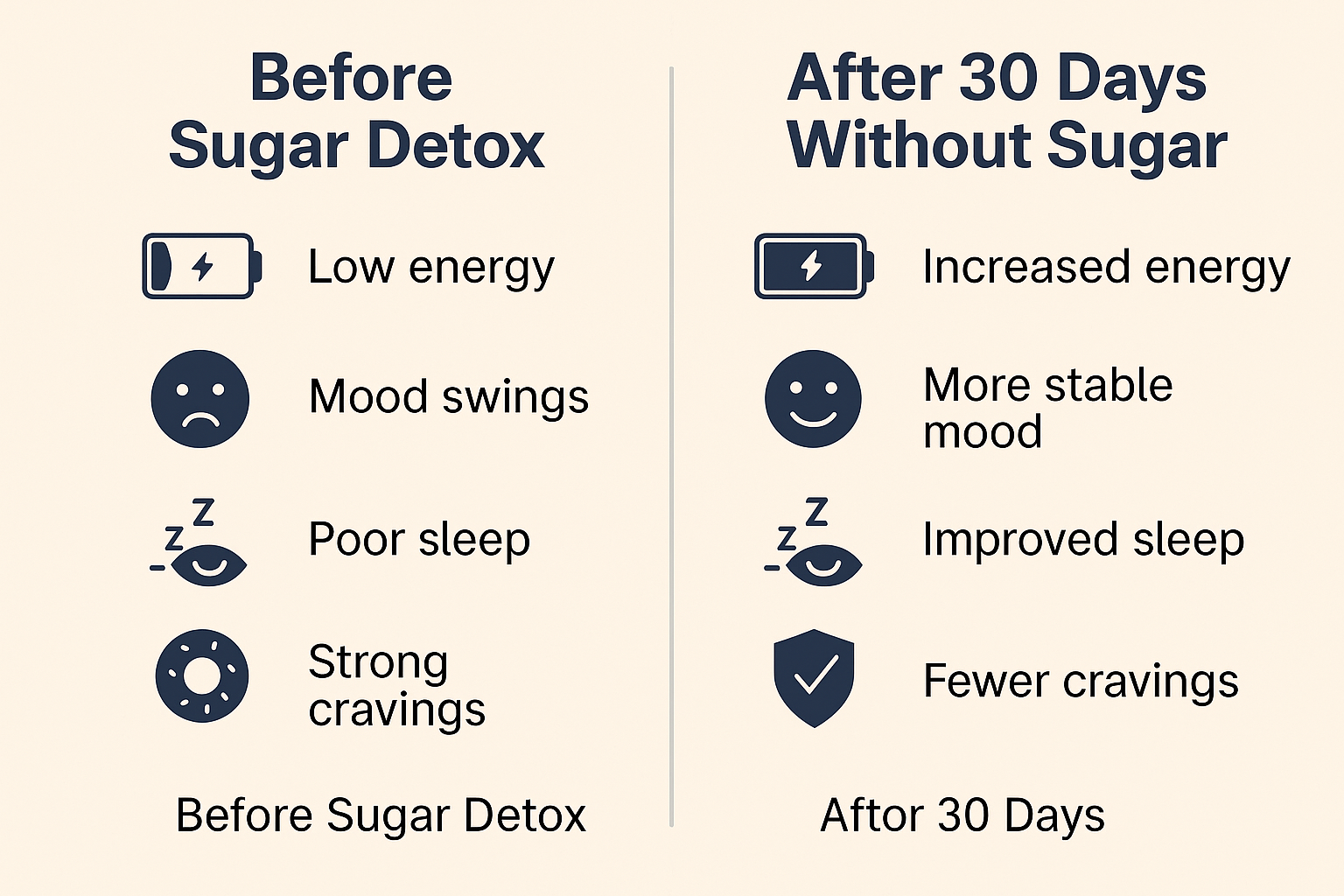
If you’re tired of the sugar-crash cycle and ready to finally break free – don’t just detox your pantry. Detox your habits.
That’s what our 30-Day Sugar Detox Challenge is designed for.
It’s not just about avoiding sugar—it’s about rebuilding how you respond to cravings and emotions.
You’ll get:
- Daily structure
- Real accountability
- Support from thousands of others just like you
- Tools to build emotional resilience and new habits that stick
👉 Join the 30-Day Sugar Detox Challenge now and make this the last detox you ever need.
Related Articles

